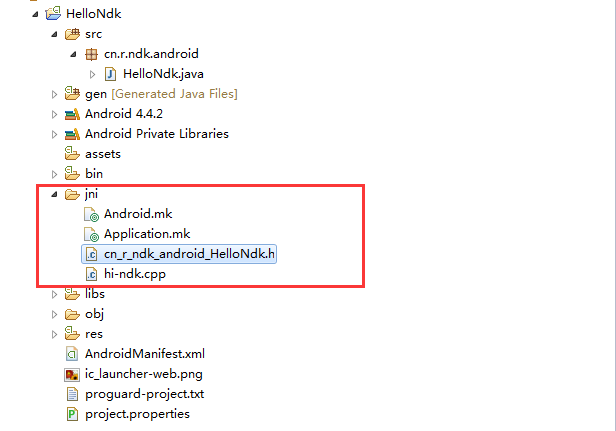編輯:關於Android編程
1,工具代碼
public class BytesTransUtil {
private String TAG = BytesTransUtil;
private static BytesTransUtil instance = null;
private BytesTransUtil() {
// Log.i(TAG, instance BytesTransUtil);
}
public static BytesTransUtil getInstance() {
if (instance == null) {
instance = new BytesTransUtil();
}
return instance;
}
public boolean testCPU() {
if (ByteOrder.nativeOrder() == ByteOrder.BIG_ENDIAN) {
// System.out.println(is big ending);
return true;
} else {
// System.out.println(is little ending);
return false;
}
}
public byte[] getBytes(short s, boolean bBigEnding) {
byte[] buf = new byte[2];
if (bBigEnding)
for (int i = buf.length - 1; i >= 0; i--) {
buf[i] = (byte) (s & 0x00ff);
s >>= 8;
}
else
for (int i = 0; i < buf.length; i++) {
buf[i] = (byte) (s & 0x00ff);
s >>= 8;
}
return buf;
}
public byte[] getBytes(int s, boolean bBigEnding) {
byte[] buf = new byte[4];
if (bBigEnding) {
for (int i = buf.length - 1; i >= 0; i--) {
buf[i] = (byte) (s & 0x000000ff);
s >>= 8;
}
} else {
System.out.println(1);
for (int i = 0; i < buf.length; i++) {
buf[i] = (byte) (s & 0x000000ff);
s >>= 8;
}
}
return buf;
}
public byte[] getBytes(long s, boolean bBigEnding) {
byte[] buf = new byte[8];
if (bBigEnding)
for (int i = buf.length - 1; i >= 0; i--) {
buf[i] = (byte) (s & 0x00000000000000ff);
s >>= 8;
}
else
for (int i = 0; i < buf.length; i++) {
buf[i] = (byte) (s & 0x00000000000000ff);
s >>= 8;
}
return buf;
}
public short getShort(byte[] buf, boolean bBigEnding) {
if (buf == null) {
throw new IllegalArgumentException(byte array is null!);
}
if (buf.length > 2) {
throw new IllegalArgumentException(byte array size > 2 !);
}
short r = 0;
if (bBigEnding) {
for (int i = 0; i < buf.length; i++) {
r <<= 8;
r |= (buf[i] & 0x00ff);
}
} else {
for (int i = buf.length - 1; i >= 0; i--) {
r <<= 8;
r |= (buf[i] & 0x00ff);
}
}
return r;
}
public int getInt(byte[] buf, boolean bBigEnding) {
if (buf == null) {
throw new IllegalArgumentException(byte array is null!);
}
if (buf.length > 4) {
throw new IllegalArgumentException(byte array size > 4 !);
}
int r = 0;
if (bBigEnding) {
for (int i = 0; i < buf.length; i++) {
r <<= 8;
r |= (buf[i] & 0x000000ff);
}
} else {
for (int i = buf.length - 1; i >= 0; i--) {
r <<= 8;
r |= (buf[i] & 0x000000ff);
}
}
return r;
}
public long getLong(byte[] buf, boolean bBigEnding) {
if (buf == null) {
throw new IllegalArgumentException(byte array is null!);
}
if (buf.length > 8) {
throw new IllegalArgumentException(byte array size > 8 !);
}
long r = 0;
if (bBigEnding) {
for (int i = 0; i < buf.length; i++) {
r <<= 8;
r |= (buf[i] & 0x00000000000000ff);
}
} else {
for (int i = buf.length - 1; i >= 0; i--) {
r <<= 8;
r |= (buf[i] & 0x00000000000000ff);
}
}
return r;
}
/*----------------------------------------------------------*/
/* 對轉換進行一個簡單的封裝 */
/*----------------------------------------------------------*/
public byte[] getBytes(int i) {
return getBytes(i, this.testCPU());
}
public byte[] getBytes(short s) {
return getBytes(s, this.testCPU());
}
public byte[] getBytes(long l) {
return getBytes(l, this.testCPU());
}
public int getInt(byte[] buf) {
return getInt(buf, this.testCPU());
}
public short getShort(byte[] buf) {
return getShort(buf, this.testCPU());
}
public long getLong(byte[] buf) {
return getLong(buf, this.testCPU());
}
/****************************************/
public short[] Bytes2Shorts(byte[] buf) {
byte bLength = 2;
short[] s = new short[buf.length / bLength];
for (int iLoop = 0; iLoop < s.length; iLoop++) {
byte[] temp = new byte[bLength];
for (int jLoop = 0; jLoop < bLength; jLoop++) {
temp[jLoop] = buf[iLoop * bLength + jLoop];
}
s[iLoop] = getShort(temp);
}
return s;
}
public byte[] Shorts2Bytes(short[] s) {
byte bLength = 2;
byte[] buf = new byte[s.length * bLength];
for (int iLoop = 0; iLoop < s.length; iLoop++) {
byte[] temp = getBytes(s[iLoop]);
for (int jLoop = 0; jLoop < bLength; jLoop++) {
buf[iLoop * bLength + jLoop] = temp[jLoop];
}
}
return buf;
}
/****************************************/
public int[] Bytes2Ints(byte[] buf) {
byte bLength = 4;
int[] s = new int[buf.length / bLength];
for (int iLoop = 0; iLoop < s.length; iLoop++) {
byte[] temp = new byte[bLength];
for (int jLoop = 0; jLoop < bLength; jLoop++) {
temp[jLoop] = buf[iLoop * bLength + jLoop];
}
s[iLoop] = getInt(temp);
System.out.println(2out->+s[iLoop]);
}
return s;
}
public byte[] Ints2Bytes(int[] s) {
byte bLength = 4;
byte[] buf = new byte[s.length * bLength];
for (int iLoop = 0; iLoop < s.length; iLoop++) {
byte[] temp = getBytes(s[iLoop]);
System.out.println(1out->+s[iLoop]);
for (int jLoop = 0; jLoop < bLength; jLoop++) {
buf[iLoop * bLength + jLoop] = temp[jLoop];
}
}
return buf;
}
/****************************************/
public long[] Bytes2Longs(byte[] buf) {
byte bLength = 8;
long[] s = new long[buf.length / bLength];
for (int iLoop = 0; iLoop < s.length; iLoop++) {
byte[] temp = new byte[bLength];
for (int jLoop = 0; jLoop < bLength; jLoop++) {
temp[jLoop] = buf[iLoop * bLength + jLoop];
}
s[iLoop] = getLong(temp);
}
return s;
}
public byte[] Longs2Bytes(long[] s) {
byte bLength = 8;
byte[] buf = new byte[s.length * bLength];
for (int iLoop = 0; iLoop < s.length; iLoop++) {
byte[] temp = getBytes(s[iLoop]);
for (int jLoop = 0; jLoop < bLength; jLoop++) {
buf[iLoop * bLength + jLoop] = temp[jLoop];
}
}
return buf;
}
}
public class main {
public static void main(String[] args) {
// TODO Auto-generated method stub
//簡單測試了short[] 轉byte[],其他類似;
BytesTransUtil bytesTransUtil = BytesTransUtil.getInstance();
int[] sTest = { 12345678, 87654321 };
byte[] byteShort = bytesTransUtil.Ints2Bytes(sTest);
int[] sTemp = bytesTransUtil.Bytes2Ints(byteShort);
System.out.println(short[0] = + sTemp[0] + short[1] = + sTemp[1]);
}
}
 Android下拉刷新上拉加載控件(適用於所有View)
Android下拉刷新上拉加載控件(適用於所有View)
前面寫過一篇關於下拉刷新控件的文章下拉刷新控件終結者:PullToRefreshLayout,後來看到好多人還
 Android JNI/NDK開發(一)
Android JNI/NDK開發(一)
少壯不努力,老大徒傷悲。大學時光的潇灑散漫導致今天連C/C++編程都不會。作為一個程序員,不會C/C++說出去簡直丟人啊。最近浏覽公司招聘信息(Android職位),發現
 android6.0源碼分析之Camera API2.0下的Capture流程分析
android6.0源碼分析之Camera API2.0下的Capture流程分析
android6.0源碼分析之Camera API2.0下的Capture流程分析 前面對Camera2的初始化以及預覽的相關流程進行了詳細分析,本文將會對Ca
 ExpandableListView 中完美嵌套 GridView
ExpandableListView 中完美嵌套 GridView
在做項目的時候,想在 ExpandableListView 中嵌套一個 GridView,在實現的過程中,遇到了不少坑,所以寫篇博客記錄一下,也順便幫助下和我一樣的新手。